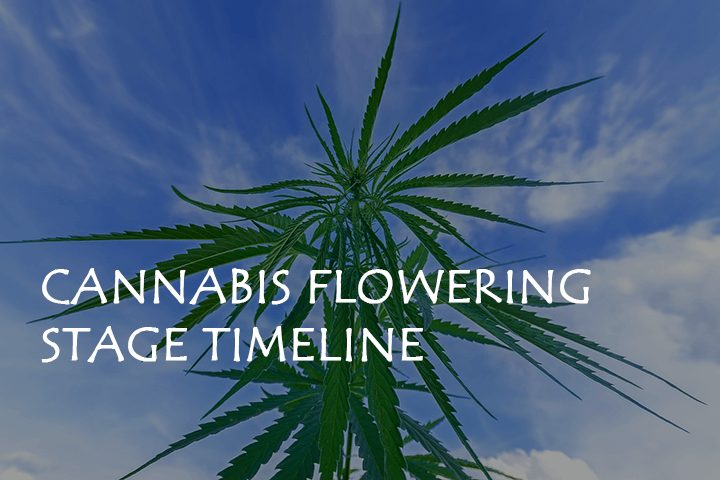
Cannabis farmers are looking forward to the final process of growing their plants – the flowering stage. If you are still discovering how to produce the best qualities of marijuana, this guide is what you are looking for. In this page, you will learn how to take good care of your plants and obtain an abundant yield in each plant.
Flowering stage is quite different from the vegging phase in terms of growing period, care, and nutrition. Once the plant switches from vegetation period to the flowering phase, expect a slow growth among the plants. This is where you see the development of buds in preparation for producing flowers. It is a sign that you should start treating them differently. It is all about being more oriented in proper nutrition and light schedule changes.
Best Time To Harvest Your Cannabis Plants
As the third week of September approaches, cannabis growers are closely inspecting the crops for harvest. As a marijuana farmer, you cannot harvest the plants too late or too early. Doing so can affect the smell and taste of the finished product. Moreover, you must also consider the psychoactive effects and THC levels of the plants before the harvest time.
For your guidance, you can refer to the details provided below. These are considered as the tools used in distinguishing the perfect time to reap the fruit of your labor.
Indica dominant strains usually take 7 to 9 weeks. Sativa-dominant marijuana strains may require 10 to 12 weeks of waiting before harvesting. Lastly, hybrid-dominant strains take between 7 and 10 weeks before it becomes fully grown.
Furthermore, those timelines that come in weeks are often regarded as an ideal match for light-dep and indoor growing conditions. On the other hand, time-of-year estimates become more accurate when it comes to full-sun cannabis growers.
For most strains, you can determine that the plants are in their highest THC levels when their pistils turn 60 to 70 percent red or brown. Checking the pistil condition can help you estimate when to harvest the crop. Here’s a quick guide to check on the pistils of the plants:
Checking the trichomes of your plants using a handheld microscope can give you a rough estimate of when they are at the optimum ripeness. You will also see that the trichome head develops clear liquid in it. Over time, this liquid changes into amber and become milky white.
Marijuana Plants Flowering Stages
After the vegetative stage, here comes the cannabis flowering stage. This is the last stage in the growing cycle of your crops. For the marijuana growers, this is the most exciting part. It takes only patience of growing and a few months of waiting to get the best results.
Unfortunately, the flowering stage is less forgiving, unlike the vegetative stage. If you want to obtain maximum yield and outstanding quality of the plants, there is no room for mistakes. At this point, you should realize the significance of your personal knowledge. This way, you can save time and energy by doing the right things.
In some cases, your plants may not encounter entering a flowering period unless you grow autoflowering varieties of strains. However, you can also switch the light cycle into equal darkness and light cycle (or 12/12).
For some growers, they even go beyond keeping the plants in darkness. As soon as the plants realize that it is already winter seasons, they enter the flowering period.
On the other hand, outdoor growing means that this process starts automatically. However, the plants should not be exposed to an extreme environment. For instance, if you start planting the cannabis seed in early weeks of spring, it will continue through summer. Hence, you can expect its flowering stage in the fall. But again, it always depends on the variety of strain.
Take note that the flowering stage of outdoor and indoor cannabis plants is triggered once they are deprived of light.
In changing your plant’s light schedule, it is crucial to assure that there is no light entering the tent or room if you intend to grow indoors. A slight disruption leads to messing up the plant development. Thus, it can cause hermaphroditism or worse, no buds at all!
In the first weeks of cannabis flowering period, the plants usually grow vigorously and double in size quickly. If you did not train your plants, see to it that you get overhead to prevent the canopy from touching your grow lights. In addition, this is the best time to identify the sex of the marijuana plants.
In fact, it is so easy to know the difference between a female and a male organ among plants. Male cannabis plants do not grow bud. In fact, their pollen sacks will make the whole crop burst to pollinate female plants.
For female cannabis, you will notice the growth of pistils. The male counterparts grow some pollen sacks. So, you need to get rid of these plants as soon as possible. Pistils can be described as the elongated hair-like and tiny leaves. Pollen sacks are like balls. Your plants can grow both, a condition which is called hermaphroditism. If this happens, remove such plant immediately.
Check out the additional information provided below for more details on the flowering phase timeline of your cannabis plants.
As mentioned earlier, the first stage is the early flowering or “stretch phase” of a plant. It is the time you should be read since other plants have a tendency to grow extremely tall. Otherwise, you need to begin with training your cannabis plants. You can count on LST methods to prevent hurting the plants in this delicate phase.
The week three of marijuana flowering stage gives you some signs like slow growth and production of small buds. In this process, the main focus of the plant is to gain energy to develop buds. Thus, do not worry if you notice discoloration and loss of leaves rapidly. You should be able to diagnose deficiencies and find the best remedy for it.
As a cannabis grower, you should know that too many nutrients burn your cannabis plants. It characterizes the production of yellowish, wilting and falling leaves. You can opt for organic solutions if possible.
As the stage approaches weeks 7 to 8, the buds turn ripe and fat. This is also the part where you measure the temperature of the grow room and pH level to prevent bud problems like foxtailing. Foxtailing refers to the condition when the buds grow out on the other side of an older bud. Avoid touching or training your plant in this case unless it is close enough to grow lights. All you need to do is to tie it down gently.
In this stage, your plants are beyond eight weeks and you are certainly one step away from harvest period. You will begin seeing the buds overpowering the cannabis stench and covering the kolas. Now, it is your responsibility to make sure that everything comes according to plan until the harvest season. Be very cautious of major discoloration or any deficiencies.
Some Tips To Ponder on Flowering Stage for Cannabis
After acquiring basic to advanced information on cannabis flowering stage, it is time to learn about some tips from professional growers.
Perhaps, you have a lot of questions in mind about this cannabis flowering stage guideline. You must read and understand all the details provided in this article first. Then, you can ask some questions to experienced growers regarding more specific topics. Always research first before trying to grow strains with different varieties.
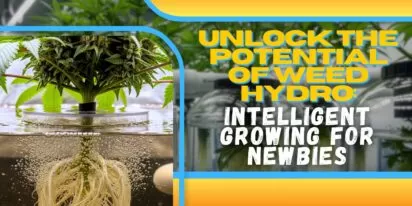
Curious about growing weed in a healthy, effective way? Welcome to the realm of weed hydro! This method uses water instead of soil, delivering n

Peyote Zkittlez is a unique cannabis strain that has quickly gained dedicated followers among enthusiasts and patients alike. Its parentage—Zk
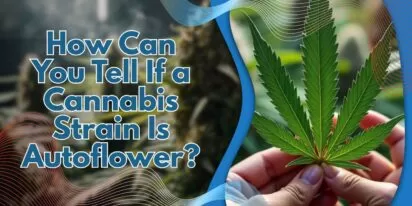
As growers, we want strains that work well, are strong, and are of good quality. Autoflowering cannabis strains are a big step forward for both
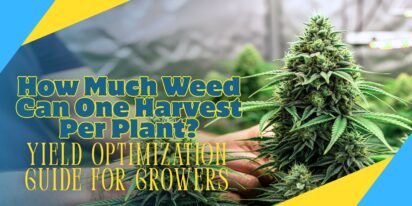
Pot growers always ask the same basic question: How much weed does a weed plant produce? The answer is complex and depends on a multitude of var

Ever had the room spin after a few hits? You're not alone. Figuring out how to prevent getting dizzy high can make your cannabis experience a wh
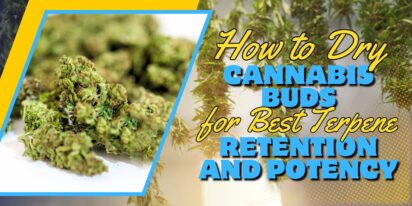
Drying cannabis properly is a critical process in preserving the plant's full aroma and flavor and its psychoactive abilities. Tampering with th

Ever caught yourself a bit too high and all of a sudden in need of being normal? Whether you're heading out for munchies or bumping into someone

Looking for sage advice on how not to get pinched with weed without batting an eye? Attempting to protect your stash from gossipy roommates, sno
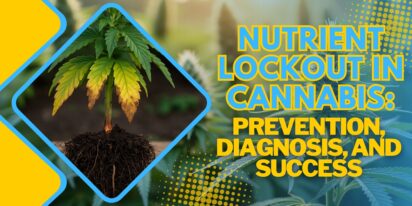
Nutrient lockout, also known as nutrient binding or chemical antagonism, is a significant issue in cannabis cultivation that negatively impacts
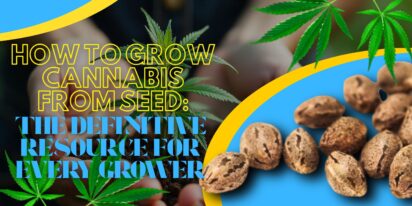
Germination is the most critical initial stage in growing healthy, high-quality cannabis plants. During germination, the dormant seed becomes a
Are You 18 Or Over?
By selecting “Continue”, you confirm that you are at least 18 years of age and legally permitted to access cannabis related content in your region.
By using Rocketseeds.com, you agree to our legal disclaimer.
Excellent blog here Also your website loads up very fast What web host are you using Can I get your affiliate link to your host I wish my web site loaded up as quickly as yours lol
Your writing is not only informative but also incredibly inspiring. You have a knack for sparking curiosity and encouraging critical thinking. Thank you for being such a positive influence!
Simply wish to say your article is as amazing The clearness in your post is just nice and i could assume youre an expert on this subject Well with your permission let me to grab your feed to keep updated with forthcoming post Thanks a million and please carry on the gratifying work
Somebody essentially lend a hand to make significantly articles Id state That is the very first time I frequented your website page and up to now I surprised with the research you made to make this actual submit amazing Wonderful task
Your blog is a beacon of light in the often murky waters of online content. Your thoughtful analysis and insightful commentary never fail to leave a lasting impression. Keep up the amazing work!
Thank you for the auspicious writeup It in fact was a amusement account it Look advanced to more added agreeable from you By the way how could we communicate
Your blog is a constant source of inspiration for me. Your passion for your subject matter shines through in every post, and it’s clear that you genuinely care about making a positive impact on your readers.
Your blog is a constant source of inspiration for me. Your passion for your subject matter is palpable, and it’s clear that you pour your heart and soul into every post. Keep up the incredible work!
Your articles never fail to captivate me. Each one is a testament to your expertise and dedication to your craft. Thank you for sharing your wisdom with the world.
Your blog is a testament to your dedication to your craft. Your commitment to excellence is evident in every aspect of your writing. Thank you for being such a positive influence in the online community.
Your writing has a way of resonating with me on a deep level. I appreciate the honesty and authenticity you bring to every post. Thank you for sharing your journey with us.
Your blog is a true gem in the world of online content. I’m continually impressed by the depth of your research and the clarity of your writing. Thank you for sharing your wisdom with us.
Hi i think that i saw you visited my web site thus i came to Return the favore Im attempting to find things to enhance my siteI suppose its ok to use a few of your ideas
Somebody essentially help to make significantly articles Id state This is the first time I frequented your web page and up to now I surprised with the research you made to make this actual post incredible Fantastic job
Usually I do not read article on blogs however I would like to say that this writeup very compelled me to take a look at and do so Your writing taste has been amazed me Thanks quite nice post
Your blog has quickly become one of my favorites. Your writing is both insightful and thought-provoking, and I always come away from your posts feeling inspired. Keep up the phenomenal work!
Every time I visit your website, I’m greeted with thought-provoking content and impeccable writing. You truly have a gift for articulating complex ideas in a clear and engaging manner.
Hey there You have done a fantastic job I will certainly digg it and personally recommend to my friends Im confident theyll be benefited from this site
I have read some excellent stuff here Definitely value bookmarking for revisiting I wonder how much effort you put to make the sort of excellent informative website
Nice blog here Also your site loads up very fast What host are you using Can I get your affiliate link to your host I wish my site loaded up as quickly as yours lol
What i do not understood is in truth how you are not actually a lot more smartlyliked than you may be now You are very intelligent You realize therefore significantly in the case of this topic produced me individually imagine it from numerous numerous angles Its like men and women dont seem to be fascinated until it is one thing to do with Woman gaga Your own stuffs nice All the time care for it up
Your blog is a beacon of light in the often murky waters of online content. Your thoughtful analysis and insightful commentary never fail to leave a lasting impression. Keep up the amazing work!
Your blog is a breath of fresh air in the often stagnant world of online content. Your thoughtful analysis and insightful commentary never fail to leave a lasting impression. Thank you for sharing your wisdom with us.
Your blog is a beacon of light in the often murky waters of online content. Your thoughtful analysis and insightful commentary never fail to leave a lasting impression. Keep up the amazing work!
Usually I do not read article on blogs however I would like to say that this writeup very compelled me to take a look at and do it Your writing style has been amazed me Thank you very nice article
Your writing has a way of resonating with me on a deep level. I appreciate the honesty and authenticity you bring to every post. Thank you for sharing your journey with us.
This hydroponics guide is quite the buzz, seriously! Who knew growing weed without dirt could be so complicated yet potentially rewarding? The breakdown of systems like DWC and NFT is helpful, though I suspect my cat might confuse the air pump for a toy. The idea of cleaner buds is tempting, especially since explaining hydro weed to my non-growing friends might get messy. And the bit about potential dizziness from hydro weed? Perfect, now I have an excuse for why I always stumble a bit after a grow session. Still, the promise of faster grows and higher yields is hard to ignore, even if it means more trips to the pH meter than to the coffee shop. Overall, a cultivating read for the curious grower!